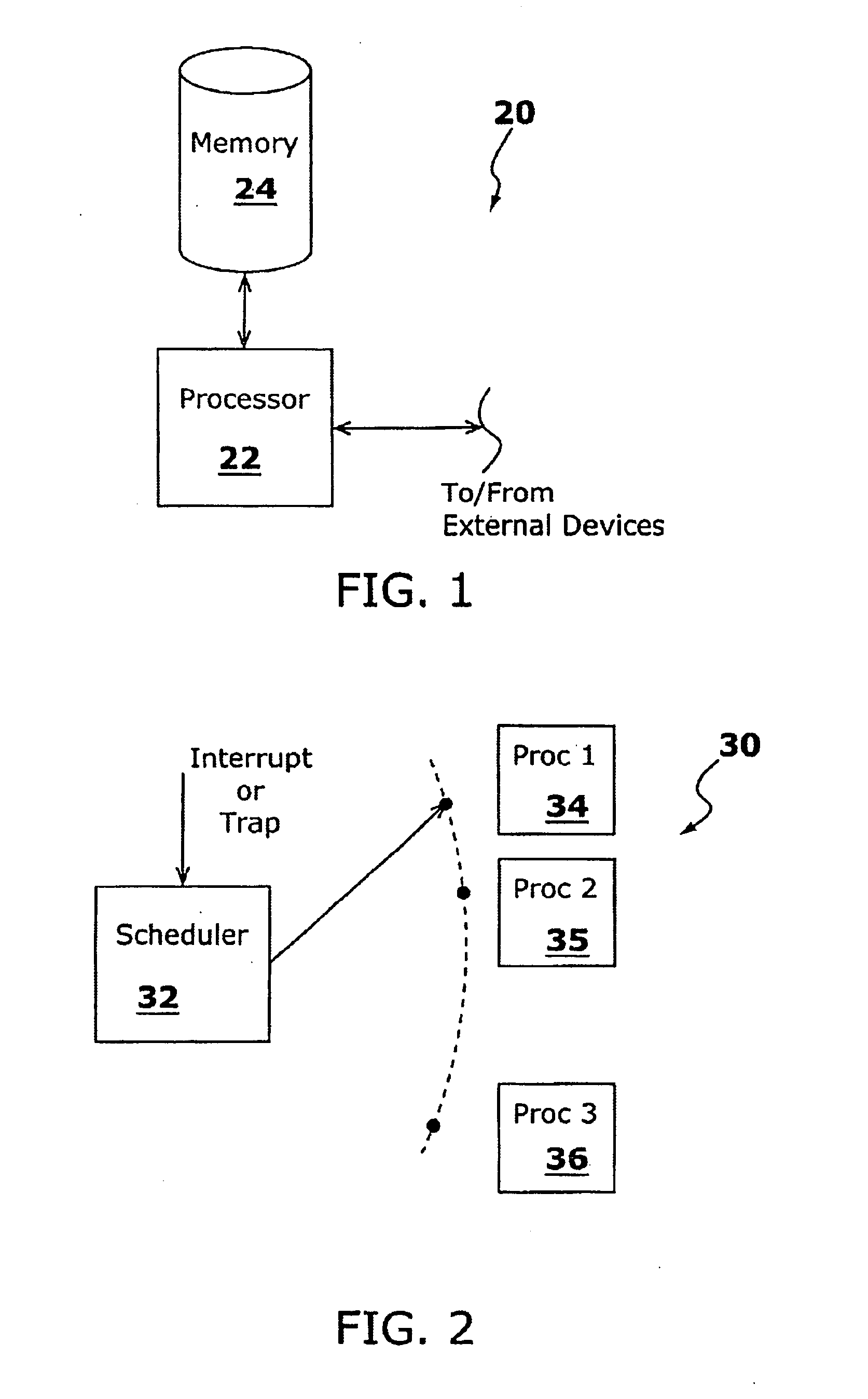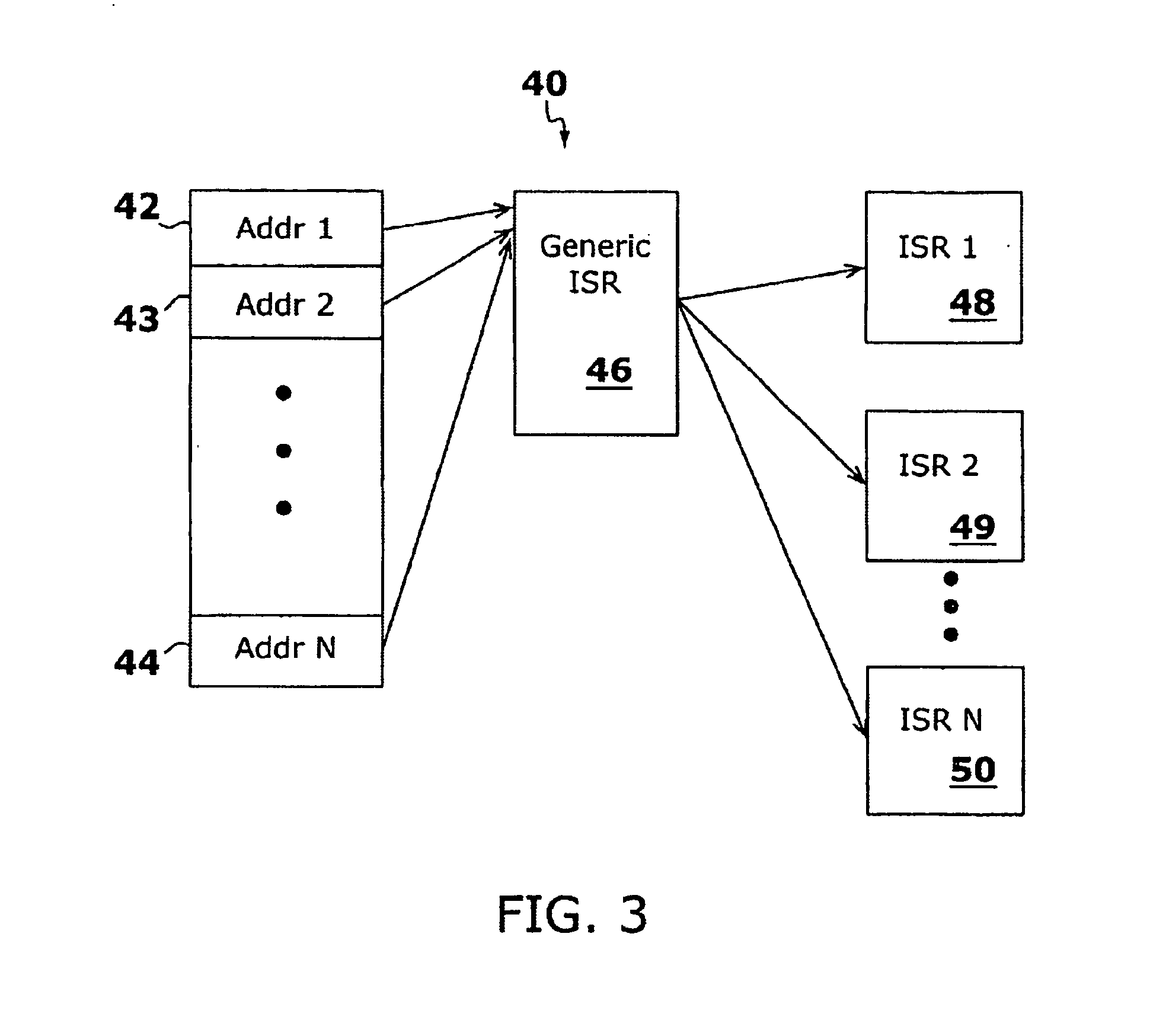Replaceable scheduling algorithm in multitasking kernel
a scheduling algorithm and kernel technology, applied in multi-processor computing, multi-programming arrangements, instruments, etc., can solve the problems of requiring a significant amount of stack space, affecting the performance of multi-processor operating systems, and unable to easily be ported to another processors, etc., to achieve the effect of enhancing kernel portability, and reducing the need for dynamic memory allocation
- Summary
- Abstract
- Description
- Claims
- Application Information
AI Technical Summary
Benefits of technology
Problems solved by technology
Method used
Image
Examples
Embodiment Construction
)
[0035]Referring to FIG. 1, a schematic diagram 20 shows a processor 22 coupled to memory 24. The processor 22 may be any one of a number of conventional, commercially available, processor devices (with corresponding support and interface circuitry), such as the power PC processor provided by Motorola, Inc. Similarly, the memory 24 represents conventional digital computer memory such as ROM, RAM, and / or other types of memory devices that may be accessed by the processor 22.
[0036]The processor 22 may also include connections 26 to and from external devices (not shown) controlled by the processor 22. The devices coupled to the processor 22 may include I / O devices, communication devices, and / or any other devices that are controllable by the processor 22. In one embodiment, the processor 22 is part of an RFID adapter board used in connection with a Symmetrics Data Storage device provided by EMC Corporation of Hopkinton, Ma. However, it will be appreciated by one of ordinary skill in the...
PUM
 Login to View More
Login to View More Abstract
Description
Claims
Application Information
 Login to View More
Login to View More - R&D
- Intellectual Property
- Life Sciences
- Materials
- Tech Scout
- Unparalleled Data Quality
- Higher Quality Content
- 60% Fewer Hallucinations
Browse by: Latest US Patents, China's latest patents, Technical Efficacy Thesaurus, Application Domain, Technology Topic, Popular Technical Reports.
© 2025 PatSnap. All rights reserved.Legal|Privacy policy|Modern Slavery Act Transparency Statement|Sitemap|About US| Contact US: help@patsnap.com



